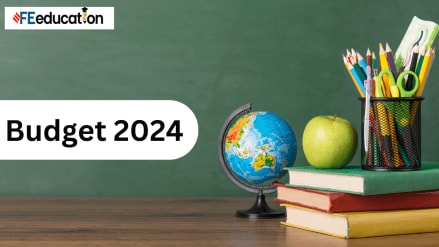As India is dreaming of becoming the third largest economy in the world in 2047 surpassing Germany and Japan. However, its expenditure on education as compared to the other four big economies is very low. In February 2024, during the interim budget speech, Finance Minister Nirmala Sitharaman announced a budget allocation of Rs 73,498 crore for the Department of School Education and Literacy. Despite an increase of 19.65% from the previous year, the allocation is still relatively very low.
For example, the United States, the largest economy in the world with a staggering $28.783 trillion GDP, spent 6% of its total GDP on education in 2023. While the neighbouring country China spent 6.13% of its GDP on education during the same period. In 2023, Germany allocated 4.6% of its GDP to primary to tertiary education (excluding R&D). Before the COVID-19 pandemic, Germany’s budget for education, research, and science was 9.8% of its GDP, as reported in Germany – Education at a Glance 2023. Japan dedicated 7.43% of its GDP to education. In contrast, India allocated only 4.6% of its total GDP to education in its interim budget for FY25.
Despite the NEP’s strong recommendation to allocate 6% of GDP to education, the central government has been unable to meet this target. “Despite recommendations from key education policies, India has struggled to allocate 6% of its GDP to education. Major policy documents like the Kothari Commission Report (1964-66), the National Policy on Education (1986), and the National Education Policy (NEP) 2020 have all emphasised this target. However, balancing the demands of other sectors—healthcare, infrastructure, defence and social welfare—often leaves education underfunded,” Tanveer Ahmad Wani, dean, R&D, Noida International University, explained.
Experts suggest that education in India is a concurrent subject, requiring coordination between central and state governments, leading to inconsistent funding across states. “India’s vast and diverse population also complicates the allocation of resources, making it challenging to meet the 6% GDP target. Ensuring equitable access to quality education across various regions and communities demands significant investment,” Wani said.
As per the data, in 2020, global spending on education amounted to approximately $5 trillion, or 4.33 percent of the world’s GDP. For context, around $9 trillion was spent on healthcare and nearly $2 trillion on military expenditures that same year. According to UNESCO, high-income countries spent nearly twice as much on education as low-income countries in 2020.
On the other hand, the situation in India demands an urgent need for high spendings and proper distribution of resources. For example, in FY22, over 200 million students were enrolled in Indian schools, with 74% in elementary schools, according to Statista. Surprisingly, in 2021, 7.7% of India’s population faced multidimensional poverty, lacking access to schooling. Multidimensionally poor individuals lack sufficient access to one-third or more of ten indicators across health, education, and standard of living. Despite an increase in the allocation, access to quality education for the 7.7% deprived population remains a challenge.
Quality of education is another issue. The ASER 2023 report reveals that among rural students aged 14-18, about 25% cannot fluently read a grade two text in their regional language, over half struggle with basic division, and only 43.3% can solve third and fourth-grade level problems. Additionally, only 57.3% can read sentences in English, and of those, 73.5% understand their meanings
Experts opine that allocating 6% of GDP to education in India could significantly boost the country’s socio-economic development. Such an investment would enhance economic growth, social equity, technological progress and political stability. Industry experts believe that education breaks the cycle of poverty, promoting social mobility and reducing income inequality. Improved access to education for marginalised communities and increased female enrollment enhance economic stability and societal inclusivity.
